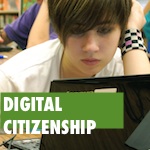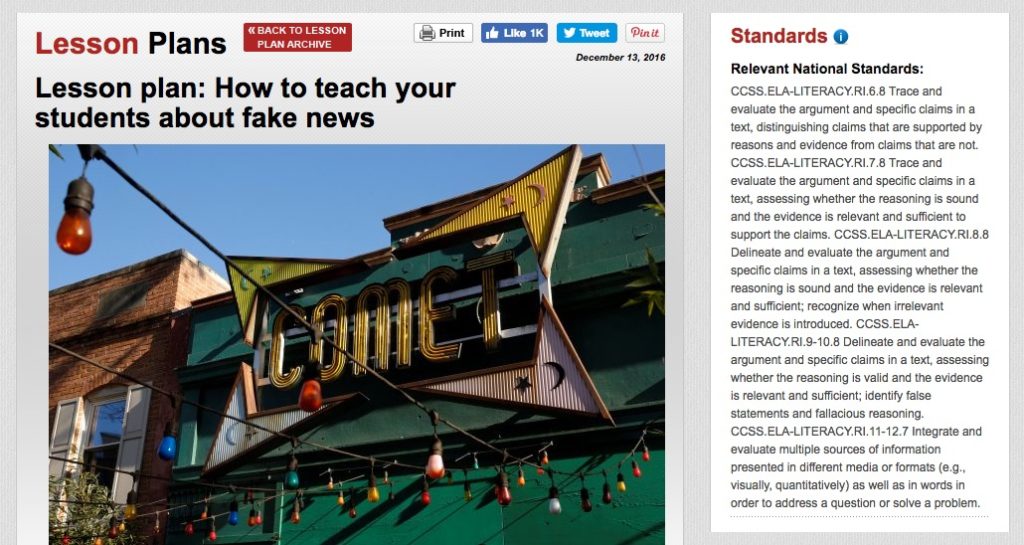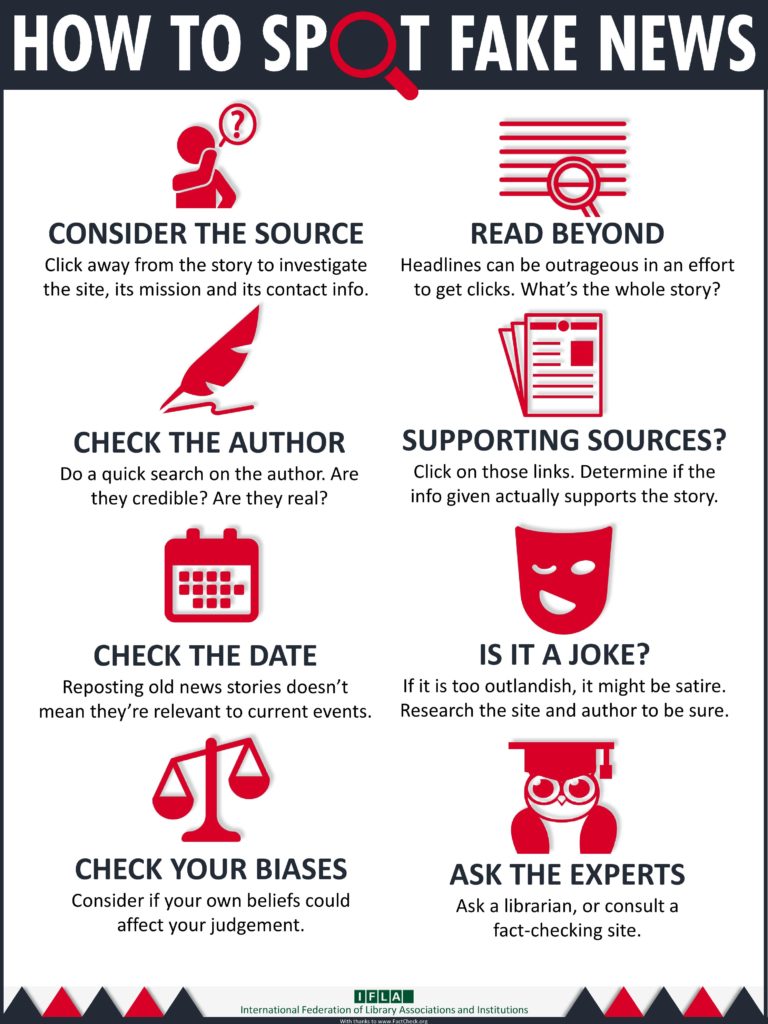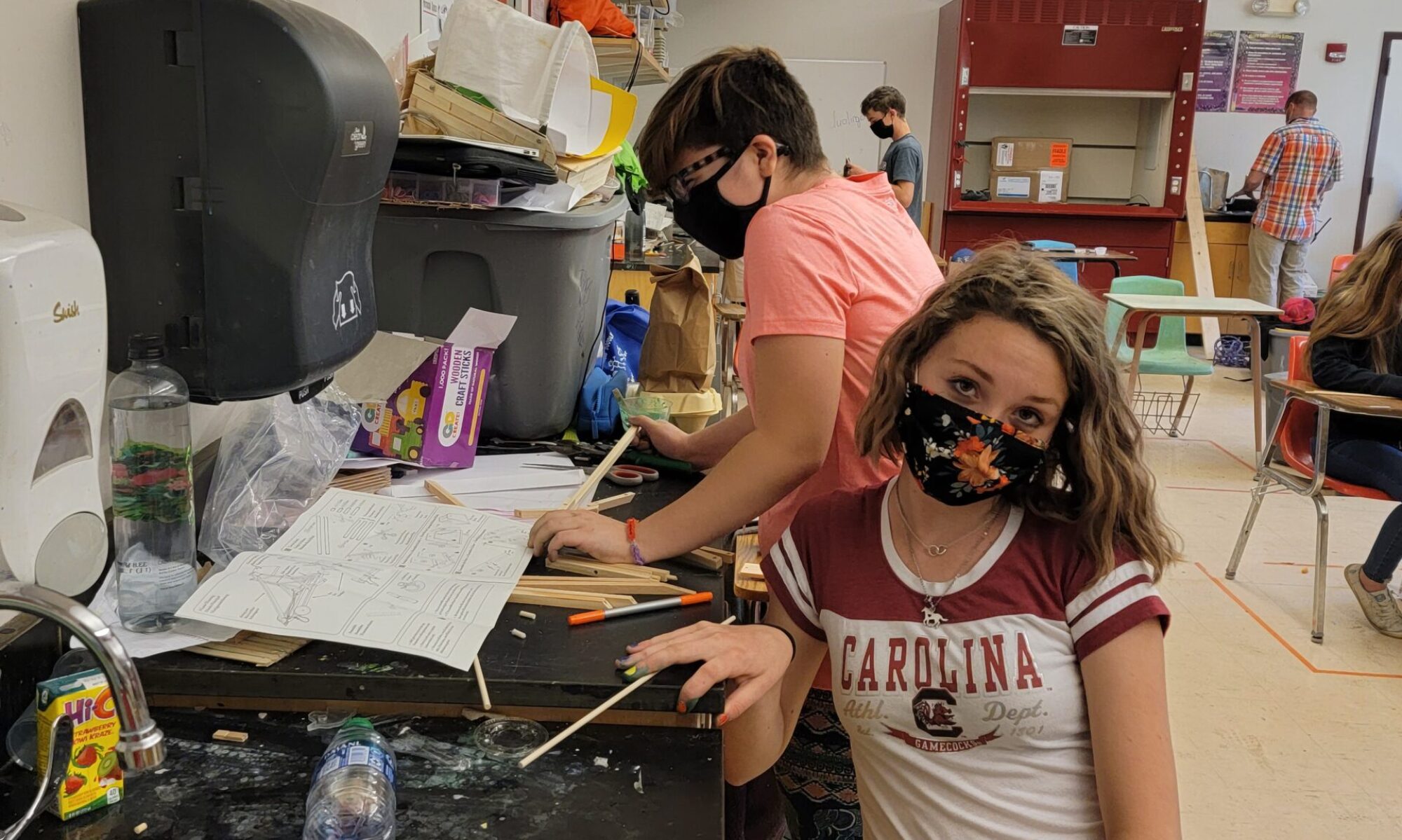Teaching news literacy in the social media age
 We’ve been hearing a lot lately about the problem of fake news stories and how they might impact our impressions of the world. Imagine: if it’s hard for adults to spot fake news stories, then how hard is it for students?
We’ve been hearing a lot lately about the problem of fake news stories and how they might impact our impressions of the world. Imagine: if it’s hard for adults to spot fake news stories, then how hard is it for students?
Turns out: VERY HARD.
Let’s look at some resources for helping students determine when a source is truly credible or not.
What’s the problem?
A recent study from Stanford University (pdf) indicates that middle, high school and college students are easily misled about news and information coming in through various social media channels. According to the study authors, “When it comes to evaluating information that flows through social media channels, [students] are easily duped.”
And according to this NPR article, more than 80 percent of middle schoolers believe that ‘sponsored content’ are real news stories.
Why is this a problem?
“Michael Lynch, a philosopher who studies technological change, observed that the Internet is “both the world’s best fact- checker and the world’s best bias confirmer—often at the same time.”
It’s that second part that’s concerning to many teachers. Our job is to challenge students’ (and our own) biases during the time when student brains are the most open to new perspectives, new ideas and new information. But the social media age has just made that job a little harder.
So let’s load up on some resources to help you teach your students to find accurate information, manage their social media feeds and make good choices about what to share.
4 Resources for teaching about fake news
1. Analyze fake news stories: what are the tip-offs?
PBS Newshour has released this lesson plan geared for students in grades 7-12. In it, students explore the benefits and drawbacks of schools blocking access to certain sites as they relate to this issue, and they analyze the most widely shared fake news stories for clues.

Make it real: follow up work with this lesson plan by drafting two lists of 10 news stories talking about your local or state community. In each list, grab a couple true stories from the local newspaper and make up the rest. Give one list as a pre-test and the other after students work through the PBS Newshour lesson plan.
2. Examine what makes false news so compelling
Another great resource comes to us from the School Library Journal. Their Pinterest board features many great links and images about helping students learn to recognize fake news. It features gems like this lesson and video from TedEd:
Another helpful video (and post) is here by Factcheck.org. This one explores the concept of confirmation bias, which could be a helpful concept for students to explore in our current society.
3 from the New York Times
The New York Times has published three helpful articles for teachers.
- The most general lesson is Evaluating Sources in a ‘Post-Truth’ World: Ideas for Teaching and Learning About Fake News. This post is chalk full of tweets, links, tip sheets, graphics, and lesson plans about how to tackle this issue. This article does have several references to the president and recent tweets of his that have been deemed false, so keep this is mind for any lesson planning or discussion.
- In another helpful take on the issue, they published a STEM-focused piece on the health claims made by certain sources and how to tell if those are true: ‘Chocolate Found to Stave Off Death!’ Analyzing the Scientific Evidence Behind Health Headlines.
- Lastly, in a post written specifically for teachers of English Language Learners (ELL), Larry Ferlazzo gives teachers clear ways to help ELL students decipher fake news stories, including this helpful list of news articles at different reading levels:
- News in Levels and the Smithsonian’s Tween Tribune provide articles about current events that can be read on multiple levels of text complexity depending on students’ English proficiency.
- Learning English from the Voice of America provides texts and videos about current events that are also designed to help students learn English.
- Youngzine and the Newsround from the BBC both provide regularly updated news articles designed to be specifically more accessible to young readers.
- Newsmap and Newser both provide short news summaries in visually engaging formats.
4. Get this discussion out into the open
One immediately helpful way to address this issue is to share some graphics with students that can help them learn to check if a story is fake news. Here are a few below — including one idea for students to develop their own graphics to share with the class.

Indiana University East has two helpful graphics for teaching and displaying here. It also teaches students the various categories of fake news so students can learn to identify what they are seeing.
More resources for fighting fake news:
- Find and use a lesson plan from the above resources.
- Share and discuss the graphics and videos included here.
- Challenge your students to create infographics or visuals to use to teach other students about this issue.
- Find articles and use the guides and visuals to determine if the news is fake. Give students practice in a supportive setting so they can grow confident and independent in their skills.
How are you helping students learn to spot fake news?


4 Replies to “4 resources for fighting fake news”
Comments are closed.